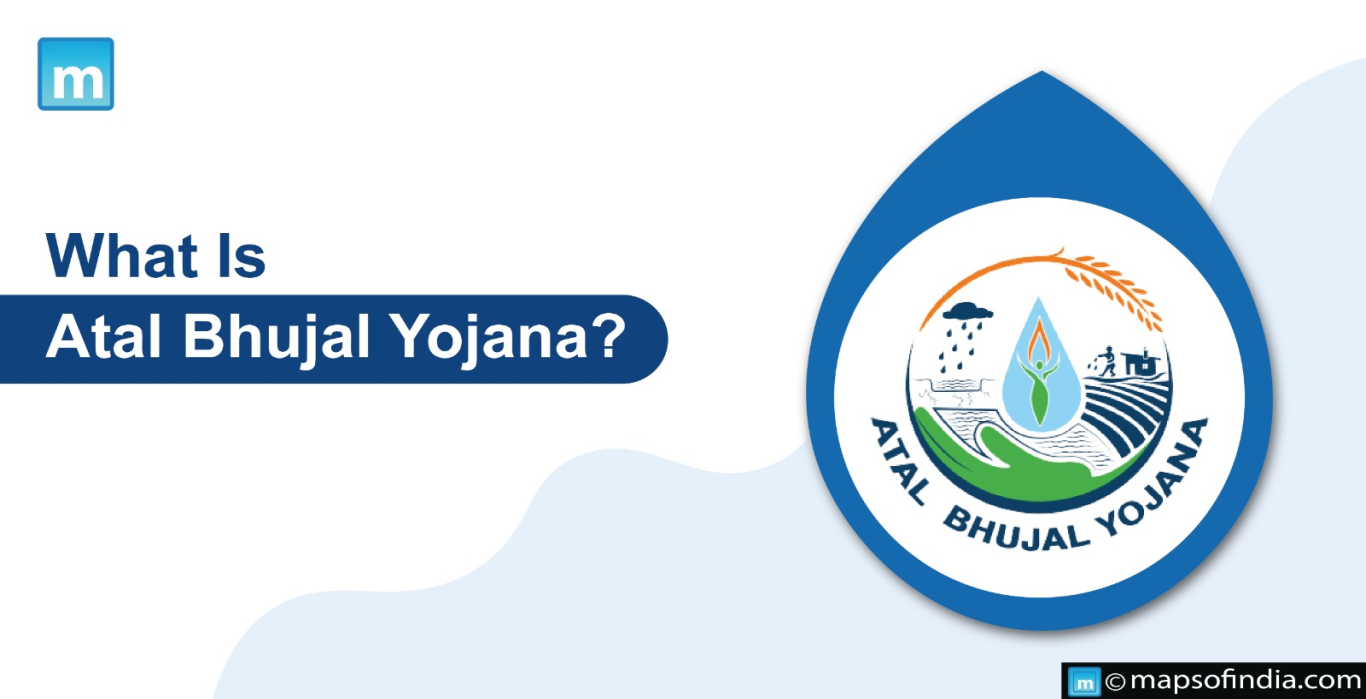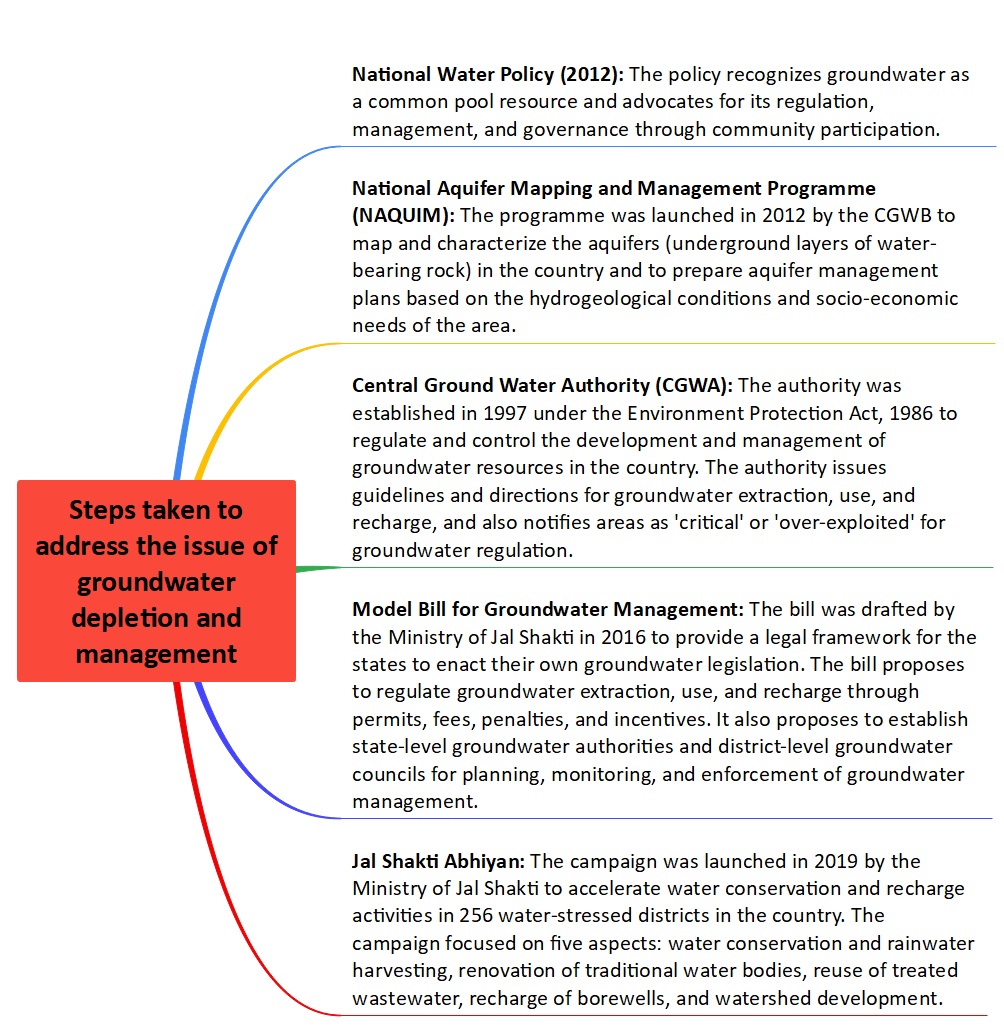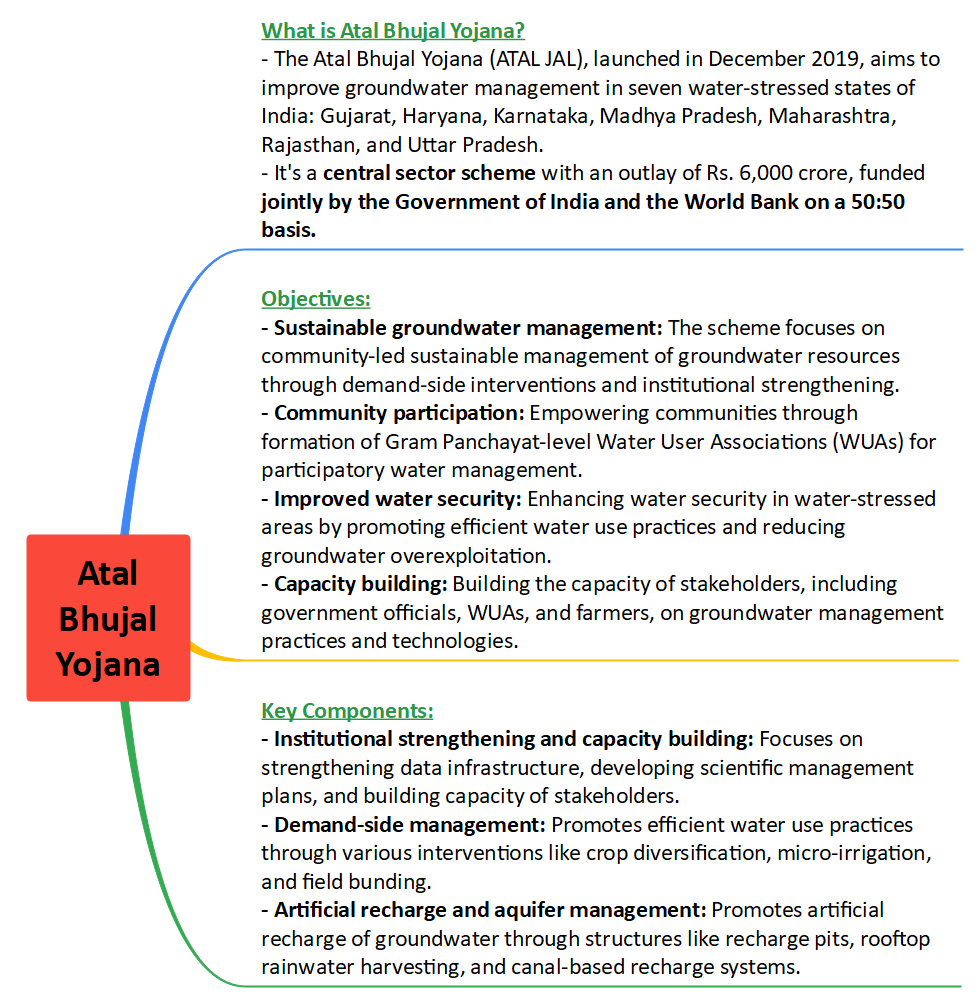Free Courses Sale ends Soon, Get It Now


Free Courses Sale ends Soon, Get It Now



Copyright infringement not intended
Picture Courtesy: www.mapsofindia.com
Context: The 5th Meeting of the Steering Committee of Atal Bhujal Yojana (ABHY) was held recently under the chairmanship of the Secretary, Ministry of Jal Shakti.
Details
Atal Bhujal Yojana
Background
|
Main reasons for groundwater overexploitation ●Increasing demand for water from agriculture, domestic, and industrial sectors. ●Lack of regulation and monitoring of groundwater extraction. ●Inadequate recharge of groundwater due to low rainfall, poor soil health, and reduced forest cover. ●Lack of awareness and participation among stakeholders about the importance and benefits of groundwater conservation. |
Key features of the scheme
Expected outcomes

Challenges
Way forward
Conclusion

Must Read Articles:
ATAL BHUJAL YOJNA: https://www.iasgyan.in/daily-current-affairs/atal-bhujal-yojna
|
PRACTICE QUESTION Q. Climate variability and extreme weather events significantly impact groundwater recharge and availability. How can groundwater management strategies be adapted to these changing conditions and future uncertainties? |
© 2024 iasgyan. All right reserved